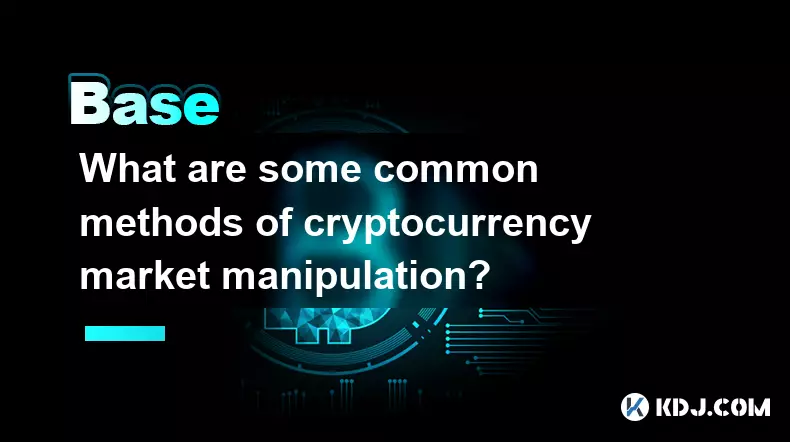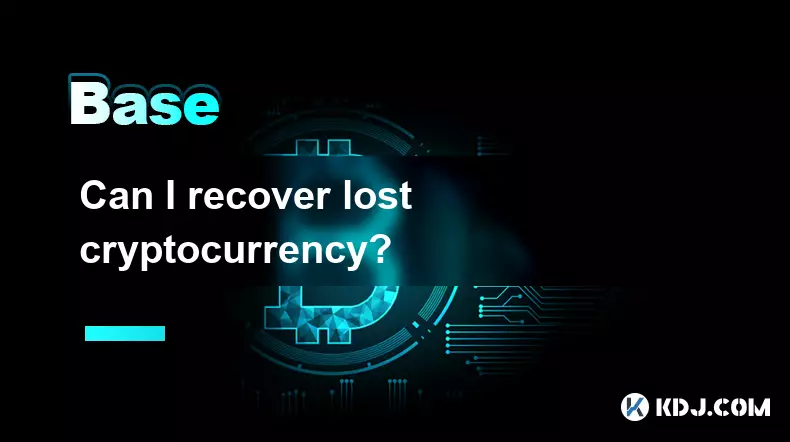-
 bitcoin
bitcoin $124586.364639 USD
0.62% -
 ethereum
ethereum $4670.671710 USD
3.33% -
 xrp
xrp $2.983701 USD
0.18% -
 tether
tether $1.000175 USD
-0.03% -
 bnb
bnb $1209.430642 USD
2.76% -
 solana
solana $231.365861 USD
0.51% -
 usd-coin
usd-coin $0.999665 USD
-0.02% -
 dogecoin
dogecoin $0.264657 USD
4.46% -
 tron
tron $0.346415 USD
1.60% -
 cardano
cardano $0.871586 USD
3.70% -
 chainlink
chainlink $23.451270 USD
7.56% -
 hyperliquid
hyperliquid $46.860071 USD
-2.96% -
 ethena-usde
ethena-usde $1.000120 USD
0.04% -
 sui
sui $3.611279 USD
1.08% -
 stellar
stellar $0.407149 USD
0.96%
How to do fundamental analysis for crypto?
Fundamental analysis in crypto evaluates a project's intrinsic value through team, technology, tokenomics, and community to determine long-term potential.
Aug 13, 2025 at 11:36 am

Understanding the Basics of Fundamental Analysis in Cryptocurrency
Fundamental analysis in the cryptocurrency market involves evaluating the intrinsic value of a digital asset by examining related economic, financial, and qualitative factors. Unlike technical analysis, which focuses on price charts and historical patterns, fundamental analysis seeks to determine whether a cryptocurrency is overvalued or undervalued based on real-world data. This process is critical for long-term investors who aim to make informed decisions rather than react to short-term market volatility. Key components include assessing the project’s team, technology, use case, tokenomics, and community support. Each of these elements contributes to the overall health and potential of the cryptocurrency.
Evaluating the Development Team and Project Leadership
One of the most crucial aspects of fundamental analysis is investigating the team behind the cryptocurrency project. A credible, experienced team increases the likelihood of project success. Start by reviewing the official website and whitepaper to identify core team members. Look for individuals with verifiable backgrounds in blockchain development, cryptography, or finance. Check their LinkedIn profiles or past contributions to other blockchain projects. Anonymous teams or those with vague bios should raise red flags. Also, assess whether advisors are actively involved or merely lending their names. Projects with transparent leadership and a track record of delivering milestones tend to inspire more confidence among investors.
Analyzing the Technology and Use Case
The technological foundation of a cryptocurrency is a major determinant of its long-term viability. Examine the underlying blockchain architecture, consensus mechanism, scalability solutions, and security features. For example, a project using proof-of-stake (PoS) may offer better energy efficiency than proof-of-work (PoW) systems. Review the GitHub repository to assess code activity—frequent commits and community contributions indicate active development. The real-world application of the token is equally important. Ask whether the project solves a genuine problem. Is it a decentralized exchange, a layer-2 scaling solution, or a decentralized identity platform? Projects with clear, practical use cases are more likely to gain adoption and maintain relevance.
Reviewing Tokenomics and Supply Dynamics
Tokenomics refers to the economic model governing a cryptocurrency’s supply, distribution, and utility. This includes the total supply, circulating supply, inflation rate, and token distribution. A capped supply, like Bitcoin’s 21 million coin limit, can create scarcity and potentially drive value over time. Conversely, unlimited or high-inflation models may dilute value. Investigate how tokens are allocated—excessive allocations to the founding team or early investors may lead to centralization risks. Check if there are mechanisms like token burning, staking rewards, or governance voting that influence demand. Also, review vesting schedules for team and investor tokens to avoid sudden sell-offs that could destabilize the price.
Assessing Community, Ecosystem, and Market Sentiment
A strong, engaged community often signals a healthy project. Visit platforms like Telegram, Discord, Reddit, and Twitter to gauge user activity and sentiment. Look for organic discussions, developer updates, and educational content rather than bot-driven hype. High follower counts with low engagement may indicate manipulation. Evaluate the project’s partnerships and integrations—collaborations with established companies or blockchain networks can enhance credibility. Monitor on-chain metrics using tools like Glassnode or Dune Analytics to observe wallet growth, transaction volume, and holder distribution. A growing number of active addresses suggests increasing adoption. Media coverage and mentions in reputable crypto news outlets also contribute to legitimacy.
Conducting On-Chain and Financial Data Analysis
On-chain analysis provides objective data about a cryptocurrency’s network activity. Use platforms such as Blockchair, Etherscan, or Solscan to inspect transaction counts, active addresses, and hash rate (for PoW chains). Rising transaction volume often correlates with increased usage. Analyze the percentage of supply held by long-term holders versus short-term speculators—a higher concentration in long-term wallets may indicate confidence in the project. Check exchange inflows and outflows; large withdrawals from exchanges suggest users are moving assets to private wallets, which can be bullish. Financial metrics like market capitalization, fully diluted valuation (FDV), and trading volume help contextualize price movements. Compare these metrics with similar projects to assess relative valuation.
Verifying Security, Audits, and Regulatory Compliance
Security is non-negotiable in the crypto space. Investigate whether the project has undergone independent smart contract audits from firms like CertiK, PeckShield, or OpenZeppelin. Review the audit reports for identified vulnerabilities and whether they were resolved. Unaudited projects carry higher risks of exploits or rug pulls. Check if the code is open-source, allowing public scrutiny. Regulatory compliance is another key factor. Determine whether the project operates within legal frameworks in major jurisdictions. Projects that proactively engage with regulators or implement KYC/AML procedures for token sales may face fewer legal hurdles. Avoid tokens that mimic securities without proper registration, as they could be targeted by authorities.
Frequently Asked Questions
How do I find the whitepaper of a cryptocurrency project?Visit the project’s official website and look for a link labeled “Whitepaper” or “Documentation.” Ensure the URL is correct to avoid phishing sites. Reputable projects usually host the whitepaper in PDF format with detailed explanations of the technology, roadmap, and token distribution.
What tools can I use to analyze on-chain data?Popular tools include Etherscan for Ethereum-based tokens, Blockchain.com for Bitcoin, and Dune Analytics for custom queries. Platforms like Glassnode and Nansen offer advanced metrics such as supply distribution and exchange flows. These tools allow you to track wallet activity and network health in real time.
Is market capitalization the best indicator of a crypto’s value?Market cap provides context but should not be used alone. A low market cap does not necessarily mean a coin is undervalued—it could indicate low adoption or high risk. Always combine market cap analysis with tokenomics, use case, and development progress for a comprehensive view.
How important is social media presence in fundamental analysis?Social media offers insight into community strength and sentiment. However, prioritize authentic engagement over follower count. Bots and paid promotions can inflate numbers. Focus on platforms where developers interact directly with users and share technical updates.
Disclaimer:info@kdj.com
The information provided is not trading advice. kdj.com does not assume any responsibility for any investments made based on the information provided in this article. Cryptocurrencies are highly volatile and it is highly recommended that you invest with caution after thorough research!
If you believe that the content used on this website infringes your copyright, please contact us immediately (info@kdj.com) and we will delete it promptly.
- BlockDAG, DOGE, HYPE Sponsorship: Crypto Trends Shaping 2025
- 2025-10-01 00:25:13
- Deutsche Börse and Circle: A StableCoin Adoption Powerhouse in Europe
- 2025-10-01 00:25:13
- BlockDAG's Presale Buzz: Is It the Crypto to Watch in October 2025?
- 2025-10-01 00:30:13
- Bitcoin, Crypto, and IQ: When Genius Meets Digital Gold?
- 2025-10-01 00:30:13
- Stablecoins, American Innovation, and Wallet Tokens: The Next Frontier
- 2025-10-01 00:35:12
- NBU, Coins, and Crypto in Ukraine: A New Yorker's Take
- 2025-10-01 00:45:14
Related knowledge

How does cryptocurrency achieve decentralization?
Sep 30,2025 at 04:37am
Understanding the Foundation of Decentralization in Cryptocurrency1. Cryptocurrency achieves decentralization primarily through the use of blockchain ...

What are some common methods of cryptocurrency market manipulation?
Sep 27,2025 at 02:55am
Wash Trading and Its Impact on Market Perception1. Wash trading involves an individual or entity simultaneously buying and selling the same cryptocurr...

How do I read a cryptocurrency whitepaper?
Sep 27,2025 at 05:54am
Understanding the Structure of a Cryptocurrency Whitepaper1. Begin by identifying the executive summary, which outlines the project’s core vision and ...

Can I recover lost cryptocurrency?
Sep 25,2025 at 08:18am
Understanding the Nature of Cryptocurrency Loss1. Cryptocurrency operates on decentralized networks, meaning there is no central authority to reverse ...

How do I choose a cryptocurrency investment strategy?
Sep 27,2025 at 03:55pm
Understanding Risk Tolerance in Crypto Investing1. Assessing personal risk tolerance is a foundational step when entering the cryptocurrency market. V...

How can I earn passive income from cryptocurrency?
Sep 23,2025 at 10:18am
Staking Cryptocurrencies for Regular Returns1. Many blockchain networks operate on a proof-of-stake (PoS) consensus mechanism, allowing users to earn ...

How does cryptocurrency achieve decentralization?
Sep 30,2025 at 04:37am
Understanding the Foundation of Decentralization in Cryptocurrency1. Cryptocurrency achieves decentralization primarily through the use of blockchain ...

What are some common methods of cryptocurrency market manipulation?
Sep 27,2025 at 02:55am
Wash Trading and Its Impact on Market Perception1. Wash trading involves an individual or entity simultaneously buying and selling the same cryptocurr...

How do I read a cryptocurrency whitepaper?
Sep 27,2025 at 05:54am
Understanding the Structure of a Cryptocurrency Whitepaper1. Begin by identifying the executive summary, which outlines the project’s core vision and ...

Can I recover lost cryptocurrency?
Sep 25,2025 at 08:18am
Understanding the Nature of Cryptocurrency Loss1. Cryptocurrency operates on decentralized networks, meaning there is no central authority to reverse ...

How do I choose a cryptocurrency investment strategy?
Sep 27,2025 at 03:55pm
Understanding Risk Tolerance in Crypto Investing1. Assessing personal risk tolerance is a foundational step when entering the cryptocurrency market. V...

How can I earn passive income from cryptocurrency?
Sep 23,2025 at 10:18am
Staking Cryptocurrencies for Regular Returns1. Many blockchain networks operate on a proof-of-stake (PoS) consensus mechanism, allowing users to earn ...
See all articles










































































